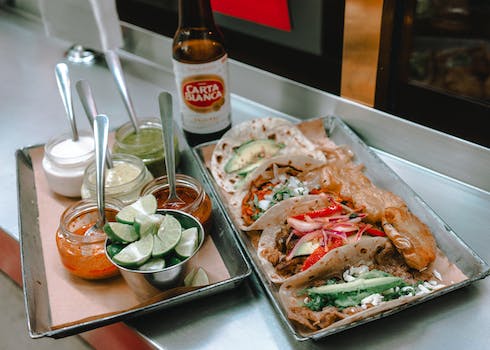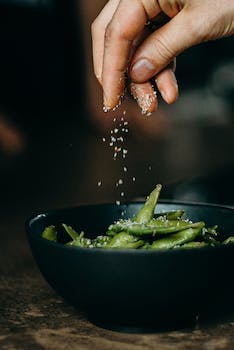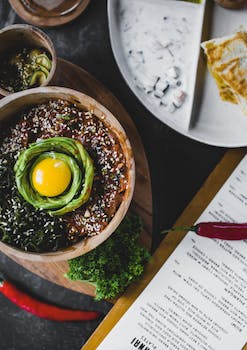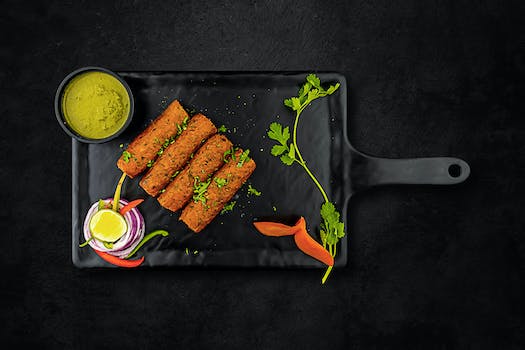

-
Table of Contents
"Embark on a global caffeine journey, from rich espresso to refreshing cold brew."
Introduction
Coffee is one of the most beloved beverages worldwide, with a rich and diverse culture that varies from country to country. From the strong and intense espresso shots of Italy to the smooth and refreshing cold brews of Japan, coffee culture has become an integral part of people's daily lives. In this article, we will delve into the fascinating world of coffee, exploring its origins, different brewing methods, and the unique customs and traditions associated with coffee consumption in various countries. Join us on this journey as we uncover the diverse and vibrant coffee cultures around the world.
The Rich History of Coffee: Tracing its Origins and Cultural Significance
Coffee is one of the most popular beverages in the world, enjoyed by millions of people every day. Its rich and complex flavors, as well as its energizing effects, have made it a staple in many cultures around the globe. But where did coffee originate, and how did it become such an integral part of our daily lives?
The history of coffee dates back centuries, with its origins believed to be in Ethiopia, where the coffee plant was first discovered. Legend has it that a goat herder named Kaldi noticed his goats becoming more energetic after eating the berries from a certain tree. Intrigued, he decided to try the berries himself and experienced a similar burst of energy. This discovery eventually led to the cultivation and consumption of coffee.
From Ethiopia, coffee spread to the Arabian Peninsula, where it became an important part of the Islamic culture. Coffee houses, known as qahwah houses, began to emerge, serving as social gathering places where people could enjoy a cup of coffee and engage in intellectual discussions. These coffee houses played a significant role in the exchange of ideas and the development of various fields, including science, literature, and politics.
In the 16th century, coffee made its way to Europe, thanks to trade routes established by the Ottoman Empire. It quickly gained popularity among the European elite, who saw it as a symbol of sophistication and refinement. Coffee houses began to spring up in major European cities, becoming hubs of social activity and intellectual discourse. These establishments played a crucial role in the Enlightenment period, fostering the exchange of ideas and the birth of new philosophies.
As coffee continued to spread across the globe, it became deeply ingrained in the cultural fabric of various countries. In Italy, for example, coffee is synonymous with espresso, a strong and concentrated form of the beverage. Italians take their coffee seriously, with a strict set of rules and etiquette governing its preparation and consumption. The Italian coffee culture is centered around the espresso bar, where people gather to enjoy a quick shot of espresso and engage in lively conversations.
In the United States, coffee has undergone a transformation in recent years, with the rise of specialty coffee and the popularity of brewing methods such as pour-over and cold brew. The American coffee culture is characterized by a focus on quality and craftsmanship, with coffee shops serving as community spaces where people can gather, work, and socialize. The demand for high-quality coffee has also led to the emergence of small-batch roasters and independent coffee shops, further enriching the coffee scene in the country.
Coffee culture is not limited to Europe and North America. In countries like Brazil and Colombia, coffee is a major part of the economy and plays a significant role in the social fabric. Coffee farms, known as fincas, are a common sight in these countries, with farmers dedicating their lives to cultivating and harvesting the beans. Coffee is deeply intertwined with the local traditions and customs, with festivals and celebrations dedicated to its production and consumption.
In conclusion, the history of coffee is a fascinating journey that spans centuries and continents. From its humble beginnings in Ethiopia to its global popularity today, coffee has become an integral part of our daily lives and a symbol of culture and community. Whether it's a strong espresso in Italy or a refreshing cold brew in the United States, coffee continues to bring people together and fuel our daily adventures.
A Journey through Different Coffee Brewing Methods: From Espresso to Pour Over

Coffee is a beloved beverage that is enjoyed by people all over the world. From the bustling streets of Italy to the cozy cafes of Japan, coffee culture varies greatly from one country to another. One of the factors that contributes to this diversity is the different brewing methods used to prepare coffee. In this article, we will take a journey through some of the most popular coffee brewing methods, from the classic espresso to the trendy pour over.
Let's start our journey with the espresso, which is the foundation of many coffee drinks. Originating in Italy, espresso is made by forcing hot water through finely ground coffee beans under high pressure. The result is a concentrated shot of coffee with a rich and intense flavor. Espresso is the base for popular drinks like cappuccinos and lattes, which are enjoyed by coffee lovers worldwide.
Moving on to the French press, which is a simple yet effective brewing method. This method involves steeping coarsely ground coffee in hot water for a few minutes before pressing down a plunger to separate the grounds from the liquid. The French press produces a full-bodied and robust cup of coffee, with a slightly gritty texture due to the presence of coffee grounds. It is a popular choice for those who prefer a stronger and more flavorful brew.
Next, let's explore the pour over method, which has gained popularity in recent years. This method involves pouring hot water over a bed of coffee grounds placed in a filter. The water slowly drips through the grounds, extracting the flavors and aromas of the coffee. The pour over method allows for more control over the brewing process, resulting in a clean and crisp cup of coffee. It is favored by coffee enthusiasts who appreciate the art and precision of brewing.
Now, let's travel to the land of the rising sun, where the art of brewing coffee has been taken to a whole new level. In Japan, the pour over method is elevated to an art form known as the "siphon" or "vacuum" coffee. This method uses a two-chambered glass apparatus where water is heated in the bottom chamber and then rises to the top chamber, where it mixes with the coffee grounds. As the heat source is removed, the brewed coffee is pulled back down to the bottom chamber through a filter. The result is a clean and delicate cup of coffee with a smooth and velvety texture.
Lastly, let's venture into the world of cold brew coffee, which has become increasingly popular in recent years. Cold brew is made by steeping coffee grounds in cold water for an extended period, usually overnight. The slow extraction process produces a smooth and less acidic cup of coffee, which is often served over ice. Cold brew is a refreshing alternative to hot coffee, especially during the summer months.
In conclusion, coffee culture around the world is shaped by the different brewing methods used to prepare this beloved beverage. From the intense and concentrated espresso to the delicate and precise pour over, each brewing method offers a unique flavor profile and experience. Whether you prefer a strong and robust cup of coffee or a smooth and refreshing cold brew, there is a brewing method out there to suit every coffee lover's taste. So, grab your favorite brewing equipment and embark on your own coffee journey, exploring the world one cup at a time.
Exploring Unique Coffee Traditions and Rituals in Various Countries
Coffee is a beloved beverage that is enjoyed by millions of people around the world. While it may seem like a simple drink, coffee culture varies greatly from country to country, with each nation having its own unique traditions and rituals surrounding this caffeinated beverage. In this article, we will explore some of the most fascinating coffee traditions from different corners of the globe.
Let's start our journey in Italy, the birthplace of espresso. Italians take their coffee seriously, and ordering a coffee in Italy is an art form in itself. The most popular type of coffee in Italy is the espresso, a strong and concentrated shot of coffee that is typically consumed quickly while standing at a bar. Italians believe that the best espresso is made with freshly ground beans and brewed to perfection, resulting in a rich and flavorful cup of coffee.
Moving on to Turkey, we encounter a completely different coffee tradition. Turkish coffee is known for its strong and thick consistency, as well as its unique brewing method. The coffee is ground to a fine powder and then boiled in a special pot called a cezve. Once the coffee is brewed, it is poured into small cups, and the grounds settle at the bottom. Turkish coffee is often enjoyed with a side of Turkish delight, a sweet treat that complements the bitterness of the coffee.
In Ethiopia, coffee holds a special place in the culture and is often used as a way to bring people together. The Ethiopian coffee ceremony is a traditional ritual that involves roasting, grinding, and brewing the coffee in front of guests. The coffee is served in small cups, and it is customary to drink three cups to symbolize friendship, love, and respect. The ceremony can last for hours, with participants engaging in lively conversation and enjoying the aroma and taste of the freshly brewed coffee.
Heading over to Japan, we discover a unique coffee trend known as pour-over coffee. This method involves pouring hot water over coffee grounds placed in a filter, allowing the water to slowly drip through and extract the flavors. Pour-over coffee is often enjoyed in specialty coffee shops, where baristas meticulously control the water temperature and pouring technique to achieve the perfect cup. This method is favored for its ability to highlight the nuanced flavors of the coffee beans.
Finally, we arrive in the United States, where cold brew coffee has gained popularity in recent years. Cold brew is made by steeping coffee grounds in cold water for an extended period, usually overnight. The result is a smooth and less acidic coffee that is often served over ice. Cold brew has become a staple in many coffee shops and is enjoyed by those looking for a refreshing and less bitter alternative to traditional hot coffee.
As we have seen, coffee culture is diverse and ever-evolving, with each country adding its own unique twist to this beloved beverage. Whether it's sipping espresso at a bustling Italian café or participating in a traditional Ethiopian coffee ceremony, exploring coffee traditions from around the world offers a glimpse into the rich and vibrant cultures that surround this global drink. So next time you enjoy a cup of coffee, take a moment to appreciate the traditions and rituals that have shaped its journey from bean to cup.
Q&A
1. What is espresso?
Espresso is a concentrated form of coffee made by forcing hot water through finely ground coffee beans under high pressure.
2. What is cold brew coffee?
Cold brew coffee is made by steeping coarsely ground coffee beans in cold water for an extended period, typically 12-24 hours, resulting in a smooth and less acidic coffee concentrate.
3. How does coffee culture vary around the world?
Coffee culture varies greatly around the world, with different countries and regions having their own unique traditions and preferences. For example, Italy is known for its espresso culture, while countries like Ethiopia and Turkey have a long history of coffee ceremonies. Other countries, such as the United States, have embraced specialty coffee and the trend of artisanal coffee shops.
Conclusion
In conclusion, exploring coffee culture around the world reveals a diverse range of brewing methods and preferences. From the strong and concentrated espresso in Italy to the smooth and refreshing cold brew in the United States, coffee has become an integral part of various cultures. The different brewing techniques and flavor profiles highlight the versatility and adaptability of coffee, making it a beloved beverage worldwide. Whether enjoyed as a morning ritual or a social gathering, coffee continues to bring people together and provide a unique sensory experience across the globe.












